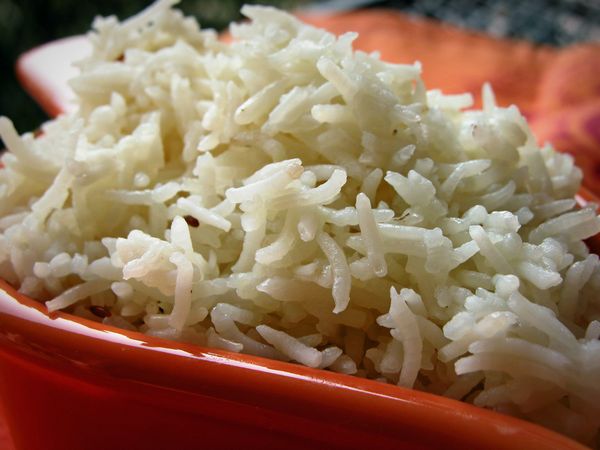
Arguably the most famous rice in the world, basmati rice is a variety of long grain rice renowned for its fragrance and delicate flavor. In Hindi, basmati literally means “queen of fragrance.” Characteristically, the grains of basmati rice are longer than usual forms of rice. The grains grow longer as they cook. They aren’t sticky and remain firm and separate.
The lyohe fertile plains in the Indian subcontinent have cultivated basmati rice since the dawn of civilization. The best basmati rice grows in the foothills of the Himalaya range of mountains in Northern India, where the rice crops are fed by the mineral-rich rivers sourced in the melting snow of the Himalaya mountains. The best of basmati rice, traditionally aged for several years before it is milled and sold, consists of lower moisture content and therefore rice cooks better.
Basmati Rice Recipe: Traditional Method
- Clean the rice. Soak it in water for five to seven minutes. Never soak Basmati for too long since the grains are softer than most varieties of rice and over soaking makes it soggy when you cook.
- Boil water first and then add the rice to it.
- Cook till the grains get tender. This generally does not take much time. You have to check repeatedly to make sure that the rice is not overcooked. Now, since I cook rice such that there is water to be drained, I have a specific measurement for water. But generally I pour enough to ensure that the rice is completely soaked and if the water gets less due to evaporation, I add some more so that it does not get sticky or dry.
- Drain the extra water. You can do this by letting the rice settle first at the bottom of the container and then drain as much water as you can on the top. There will be some water still remaining. Cover the container with a dish of the same size as the rim of the container and gradually pour out the rest of the water. Now, with the mouth covered with the dish/lid invert the container completely and let it rest on the kitchen slab near the sink for a while so that most of the water drains out and flows into the sink. (you don’t want a mess right! Also remember to be careful while draining the water. Hold the dish/lid with a cloth so that you don’t burn yourself.
- To ensure that the grains are completely separated add some cold (room temperature) water into the rice again and repeat step 4. I have found that this really helps and separates the grain.
I always cook rice by draining the extra water and thus the starch.